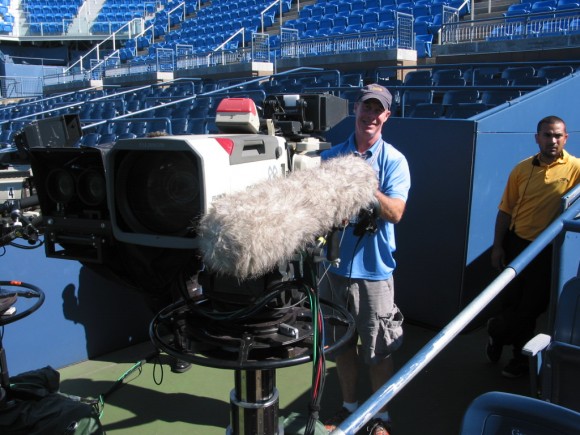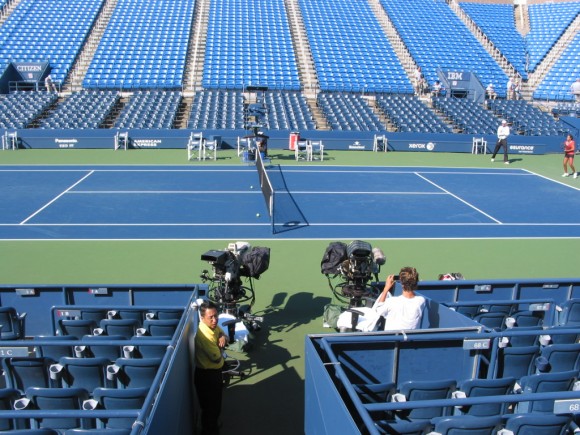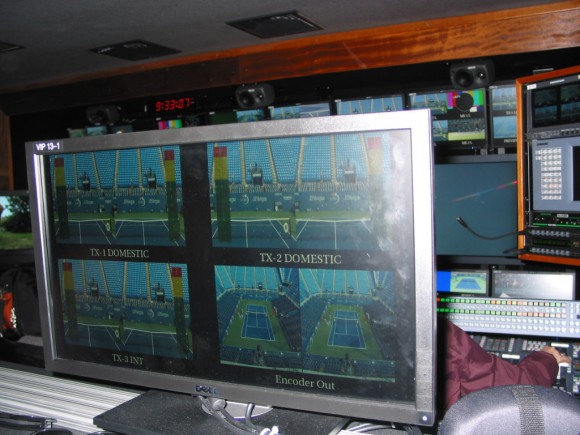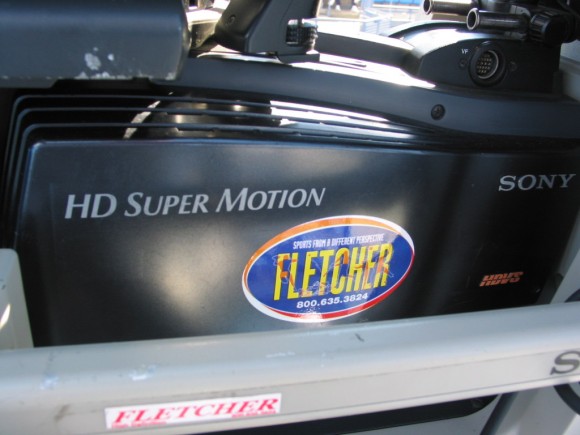Behind the Lens: US Open
NEW YORK – The US Open, not just a tennis match in Queens, rather a place for the elite to meet. With over forty countries represented in the tournament, each will have network broadcasts covering the event. It will come as no surprise saying that to capture an accurate portrait of the most elite players in the world, will take the talents of the most elite cameramen in the world. And in Queens, New York, at the “Open”, is where that combination of talent can be found yearly, creating magic during the late days of August.
Rick Cypher a long-time camera operator for Ferro Productions, has applied his craft for over 10 years shooting the US Open. Rick began covering the event for ESPN International in 1990 followed by several years at ESPN while continuing on to the USA Network and is currently with CBS, providing vital camera coverage today for the Open.
Arriving on location two days before the Open begins, Rick has to build his camera station and get situated. Crews have already been in Queens for two weeks wiring the stadiums and going over logistics as a roadie would in prep for the headliner. Our headliner is Cypher, who continues to set up his camera on the pedestal dolly and a quick two days are here and gone, it is tournament time! Let the WORK and GAMES begin.
A typical workday for Cypher begins at 8 AM and ends around 11 PM. Rick arrives at the stadium early, and goes through a fax check with the rest of the CBS crew. At this time everyone involved in the production is testing their equipment to insure there are no problems. The Technical Director checks in with each member of the crew determining whether or not everything is working properly. After the fax check, around 11 AM, it’s match time. Rick and camera are stationed on the playing court, slightly to the left side of the net, not a bad seat to enjoy the match, if it wasn’t WORK! His responsibility is to cover the player on his side of the court. Rick tells us “Whoever is on my side of the net, I cover exclusively.”
So who’s covering the other ½ of the court and the rest of the event? There are two other camera operators on the court with Rick along with three more operators located in the upper level of the arena. Six total. These six men have the awesome responsibility of capturing EVERY angle of the match to be delivered to the millions of viewers worldwide. “Anything can happen to anyone at any time, and I have to be 110% aware of that. If I miss a shot on my camera, the whole world misses that shot on television.” Rick shares.
With such extreme responsibility, the cameramen need to be at the top of their game and focused at all times. Given the high levels of pressure to perform, with the late August humidity, it’s tough to continue operating at such a high level for an extended period of time which is a testament to the professionalism and greatness of the chosen 6 cameramen. This is why every few hours there’s a substitute sent to relieve Rick of his duties for a forty-five minute break. “Before a match I need to make sure my camera is perfectly balanced and comfortable, because it is a long day, and if I’m not comfortable, it simply won’t work.”
Along with battling the long days heat of August, Rick faces other challenges covering the event. The viewfinder on his camera is very unique. Unique in the sense that what it displays is much different than what one would see on television. How so? When Rick looks through the lens, he is not seeing what the viewers are seeing at home, he’s seeing it all in black and white. We asked Rick why? His response “ Color doesn’t work because you lose contrast between the subjects. With black and white, you will see gray contrast.”
Additionally, his screen has peeking horizontal and vertical details, to help him achieve the greatest focus. “If you looked at my
viewfinder it would be unacceptable for television, but that is why I’m behind the camera, and you are behind the remote!”
At one of the largest sporting venues and events in the world, it is simply business as usual for Rick Cypher. Two straight weeks of fifteen-hour workdays, monumental responsibilities, and harsh weather conditions, all are no match for Rick’s passion and desire to operate camera. “A good camera operator will always be able to tell a story. If you can’t handle the pressure and deliver the story to the people, you won’t be on the job.” We’re glad to have Rick on our crew and from all tennis fans, thanks Rick for bringing us many years of memorable matches.







